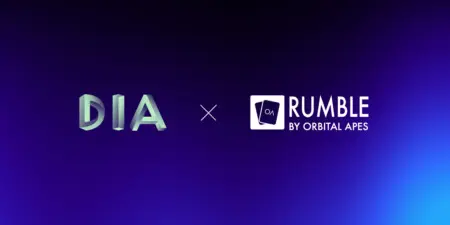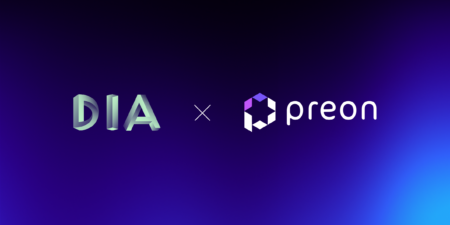DIA Enables On-Chain Verification for Stroom’s Bitcoin Reserves
DIA oracles now deliver Lightning Network node balance data to Ethereum, enabling strBTC holders to verify their Bitcoin backing without relying on centralized attestation

Bringing Lightning Network Transparency to Ethereum DeFi
The promise of decentralized finance extends beyond permissionless access; it demands transparency users can verify themselves. As Bitcoin bridges evolve to unlock liquidity across chains, proof of reserves becomes critical infrastructure, not optional compliance theater.
DIA now provides verifiable Lightning Network node balance data on Ethereum for Stroom, enabling on-chain verification of Bitcoin reserves backing strBTC tokens. This integration removes trust assumptions from the reserve validation process, replacing attestation reports with auditable oracle data.
The Challenge: Cross-Network Verification
Stroom connects Bitcoin with Ethereum through a liquid staking protocol. Users deposit BTC to earn routing fees on the Lightning Network while receiving strBTC, a liquid ERC-20 token representing their staked Bitcoin.
The architecture requires coordination across three networks: Bitcoin Layer 1, the Lightning Network, and Ethereum. While Stroom’s K-of-N multisig federation provides security through distributed key management, users still need independent verification that their strBTC tokens correspond to actual Bitcoin reserves held in Lightning.
Traditional proof of reserve systems rely on periodic audits or attestation services, external reports users must trust rather than verify. For protocols claiming to eliminate intermediaries, this creates an obvious contradiction.
The Solution: Verifiable Oracle Infrastructure
DIA oracles pull Lightning Network node balance data directly from primary sources and publish it to Ethereum. Every data point becomes verifiable on-chain through DIA’s rollup infrastructure, creating an auditable trail from source to smart contract.
The integration delivers:
- Lightning Network balance data published to Ethereum at regular intervals
- On-chain verifiability through DIA’s oracle architecture
- Transparent data sourcing from Lightning Network nodes
- Cross-chain compatibility supporting Stroom’s multi-chain infrastructure
Rather than trusting attestation reports, strBTC holders can now verify their Bitcoin reserves through on-chain oracle data. The verification process becomes permissionless: anyone can audit the reserves backing liquid staking tokens.
Don't trust, verify" is the true crypto motto. And we truly follow it. That's why, with the help of our partners from DIA Oracles, we finally overcame the not-trivial task of publishing Lightning Network node balances on Ethereum and now have an on-chain proof of BTC reserves backing minted strBTC tokens!Rostyslav ShvetsCo-Founder of Stroom
Why Verifiable Data Infrastructure Matters
As Bitcoin DeFi matures beyond simple wrapped tokens, protocols need oracle infrastructure that matches blockchain’s core verifiability promise. Liquid staking derivatives, cross-chain bridges, and collateralized lending all depend on accurate reserve data, but accuracy alone isn’t enough.
Web3 users shouldn’t need to trust oracle providers any more than they trust centralized exchanges.DIA’s approach puts verification on-chain: the rollup infrastructure processing oracle computations makes every data point auditable from source to destination.
For Stroom, this means users can independently verify that their strBTC tokens correspond to actual Bitcoin in Lightning Network. For the broader ecosystem, it demonstrates how cross-chain verification should work, transparently and without trusted intermediaries.
Proof of Reserves for Bitcoin DeFi
As protocols build increasingly sophisticated financial products around Bitcoin, from liquid staking to lending markets to derivatives, the need for verifiable data infrastructure grows accordingly.
Lightning Network brings Bitcoin into the realm of instant, low-cost transactions. Liquid staking protocols like Stroom unlock those benefits while maintaining DeFi composability. But the security model only works if users can verify what centralized systems previously asked them to trust.
DIA’s proof of reserve oracles provide that verification layer. The same infrastructure supporting price feeds for DeFi protocols across dozens of chains now delivers Lightning Network data to Ethereum, creating an auditable bridge between Bitcoin’s Layer 2 and EVM ecosystems.









